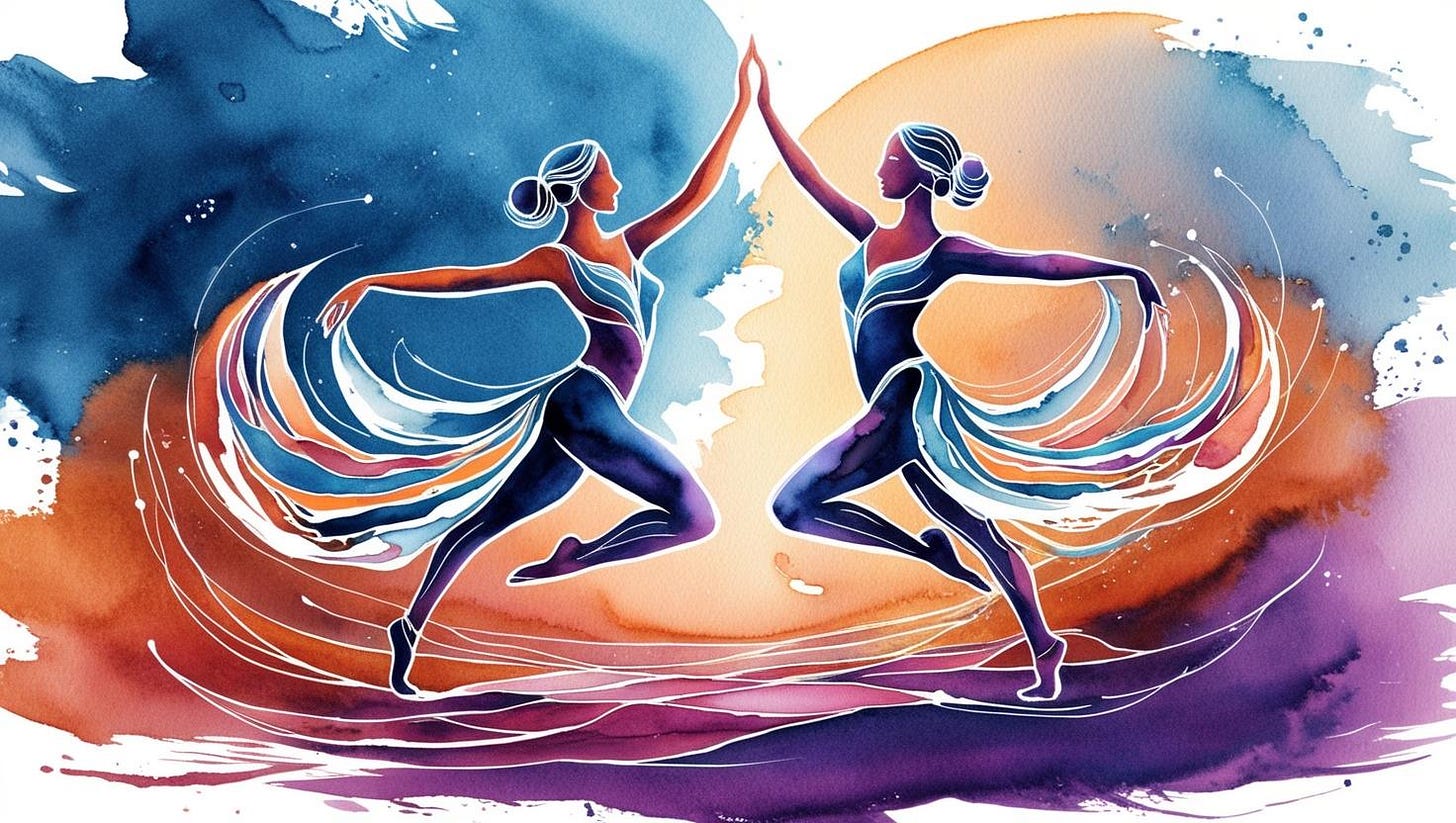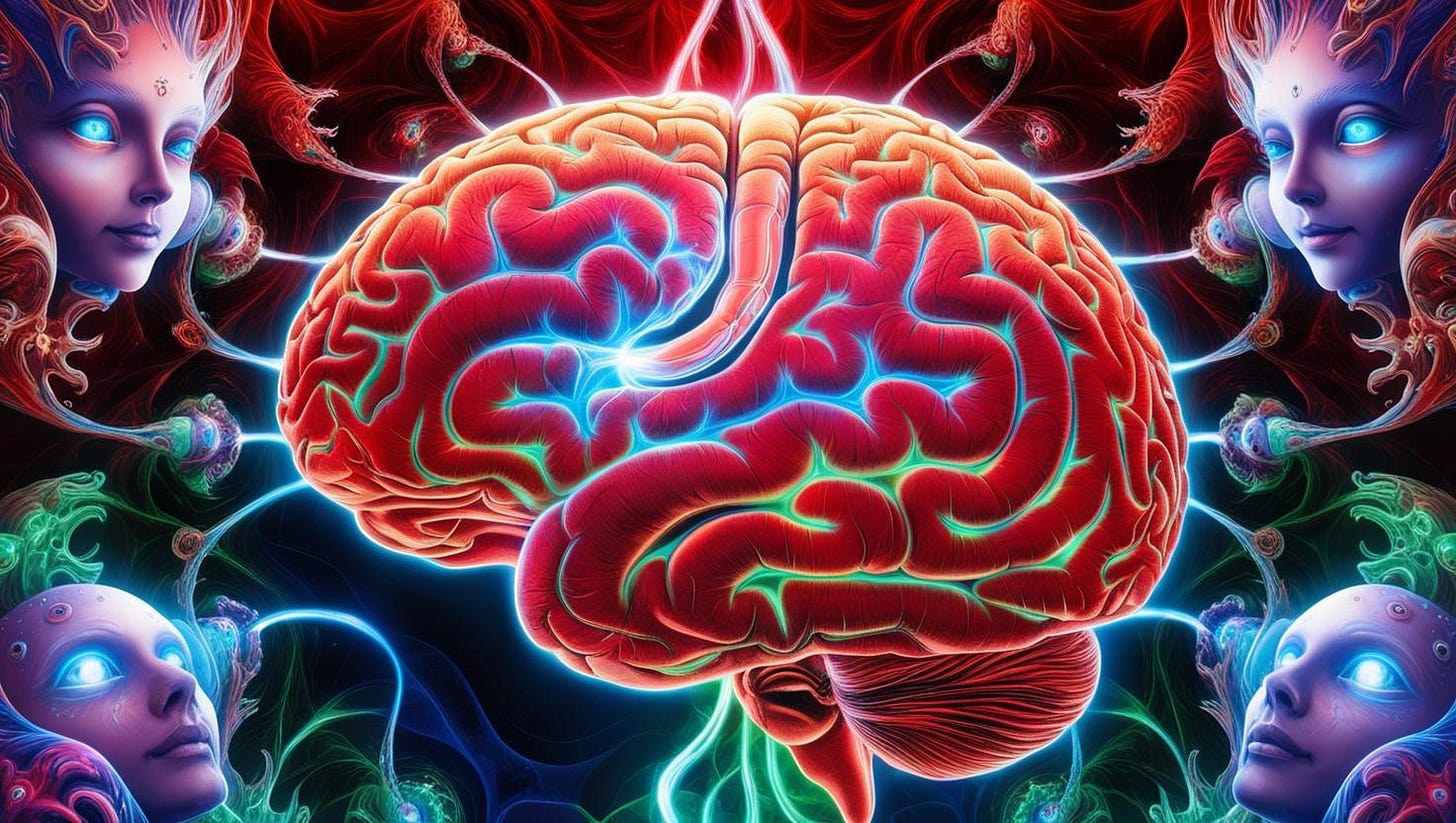Why are ravers so dang nice? A scientific exploration of raving and empathy
Kindness isn't just a cultural fluke: it's an inevitable outcome of raving

Stepping into a rave can feel like stepping into an alternate reality. The music, the lights, and the fashion all signal that things are DIFFERENT here.
But the most significant difference is not found in any of these external signs.
It’s energetic, not physical.
The environmental element that distinguishes the rave from the “real world” lies in how people treat each other. It’s the flow of empathy that rushes through the crowd, motivating acts of kindness, selflessness, and grace.
But how did this aspect of rave culture come to be? Why are ravers so dang nice?
One might assume that raves simply attract nice people, rather than create them. While a little bit of reverse causation is certainly possible here, there is a mechanism by which raves themselves could increase empathy.
At raves, we dance. Sometimes, we dance alone, sometimes with our friends, sometimes with strangers, and sometimes with a mix of both. When we dance with others, our movements occur simultaneously, following the same beat.
And when we sync up our movements with others, something very interesting can happen.
It’s hard to describe the feeling, but let me try. It feels like catching a wave on a boogie board, except the boogie board unexpectedly dissolves, and you are no longer riding the wave but are part of it. Headbanging circles in particular feel like riding a seesaw on a childhood playground, as you and your partner(s) move in tandem, never landing or rising too hard but carrying each other smoothly up and down via shared momentum. The feeling is characterized by effortlessness and connection to others, such that the self you spend so much time protecting doesn’t seem so distinct after all. It feels like you and those around you are part of a single organism as you move together, the boundaries between individuals blurred beyond recognition. And this loss of self doesn’t feel scary. It feels like childlike joy.
This might sound like mysticism to you. But it has a scientific explanation.
A lab at M.I.T. has developed “neuroprostheses,” which are bionic limbs controlled not by an algorithm but by the human nervous system (yes, really). This revolutionary technology allows amputees to regain near full control over their movements, as the prosthetic limbs feel like they are actually part of the body. The limbs take advantage of the body’s (real) “sixth sense”: proprioception, or the body’s ability to sense its position in space. Because the limb can both give and receive feedback to the brain, its user begins to perceive it as part of their body, a feeling described as “prosthetic embodiment.” The user tells their toe to point, and they watch and feel the robotic foot point. They tell their body to walk, and then see and feel the prosthetic limb joining in. With a bit of repetition, the feeling is locked in: the limb is now incorporated into their body, into their sense of self.
I believe a similar phenomenon occurs when we dance together. Music, especially music with a strong beat, allows us to time up our movements. When we observe others moving at the same time as us, our brain’s sense of self begins to expand. When we change up our movements, others may change in response, and vice versa. This giving and receiving of feedback makes it feel like “I” am not just moving one body, but many. Others are incorporated into the “self.” Call it collective embodiment, if you’d like.

You may conclude that the feeling of unity when dancing with others isn’t special, casting it aside as an artifact of how our brains process information, a special kind of optical illusion.
But I’d encourage you to play with an alternative explanation, just for fun. Perhaps your belief that “you” are contained to your body is a constraint imposed by the human mind to protect itself and its vessel. Perhaps the “you” that you observe is just one tiny corner of the great “I AM,” just one five-billionth of Morty. Perhaps the consensus view of the self is the optical illusion, and this expanded sense of self is a truer reflection of reality.
If you believed this, truly believed it, how would your life change? Would you share a bit more love as you move through the world? Would you offer forgiveness more freely, with the understanding that others—just like you—act from their exhaustion, fear, trauma, and shame?
How would you behave if the golden rule—treat others how you would like to be treated—wasn’t just a platitude for children, but a not-so-subtle hint about the true nature of reality? You would treat others how you would like to be treated not because they are others, but because they are you.
Suppose that when we dance together, we are reminded of this truth. We connect with the collective consciousness, even if only to a small degree. Could that be why ravers—who frequently dance with others, often strangers—are so kind to each other? Whether on a conscious or unconscious level, could ravers’ behavior be driven by this science?
There are two tangible signs that suggest that ravers’ empathy could come from their conscious or unconscious connection to our collective being:
Dubstep crowds are the friendliest crowds. This is unexpected, because dubstep often sounds angry or aggressive. But it makes sense if you consider that dubstep, with its strong bassline, allows for people to sync up their movements more easily. Headbanging in particular is easy to do in a group setting. And it’s magical to be a part of a crowd that’s headbanging together.
Big, expressive dancers are particularly friendly and kind. I may be biased on this one. But especially if I’m alone, I like to look for a group of big dancers in the crowd. When I dance near them, they always welcome me wordlessly. When we chat afterwards, it feels like talking to an old friend.
This is why ravers are so dang nice. They are regularly connected to their broader self—the self that encompasses all things, the self that vibrates with all the energy in the universe. They’re not just being kind to you. They’re being kind to themselves.
Mia Arends loves writing and dancing—and thinks both are cosmically important. Follow her on Instagram, Threads, or Reddit.
The voiceover to this article features:




It’s a lot easier to be nice to others when we disabuse ourselves of the mistaken notion others are separate entities. The dissolution of ego and the recognition that we may all be one is a core part of many religious and psychedelic epiphanies.
This was beautiful, Mia. You put into words something I’ve felt at raves during my younger years but never quite had the language for—that soft dissolution of self into something bigger. Reminds me of that awesome scene in one of the Matrix movies when the underground breaks out into a collective dance.
On that note, love the idea of “collective embodiment”—that perhaps these brief moments of unity aren't illusions, but glimpses of a deeper truth. If that is the real nature of things, it explains a lot about the kindness & openness we see in rave culture.
Subscribed. Looking forward to reading more.